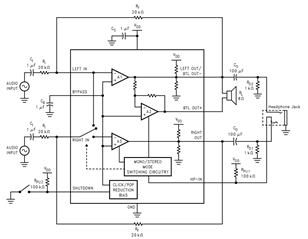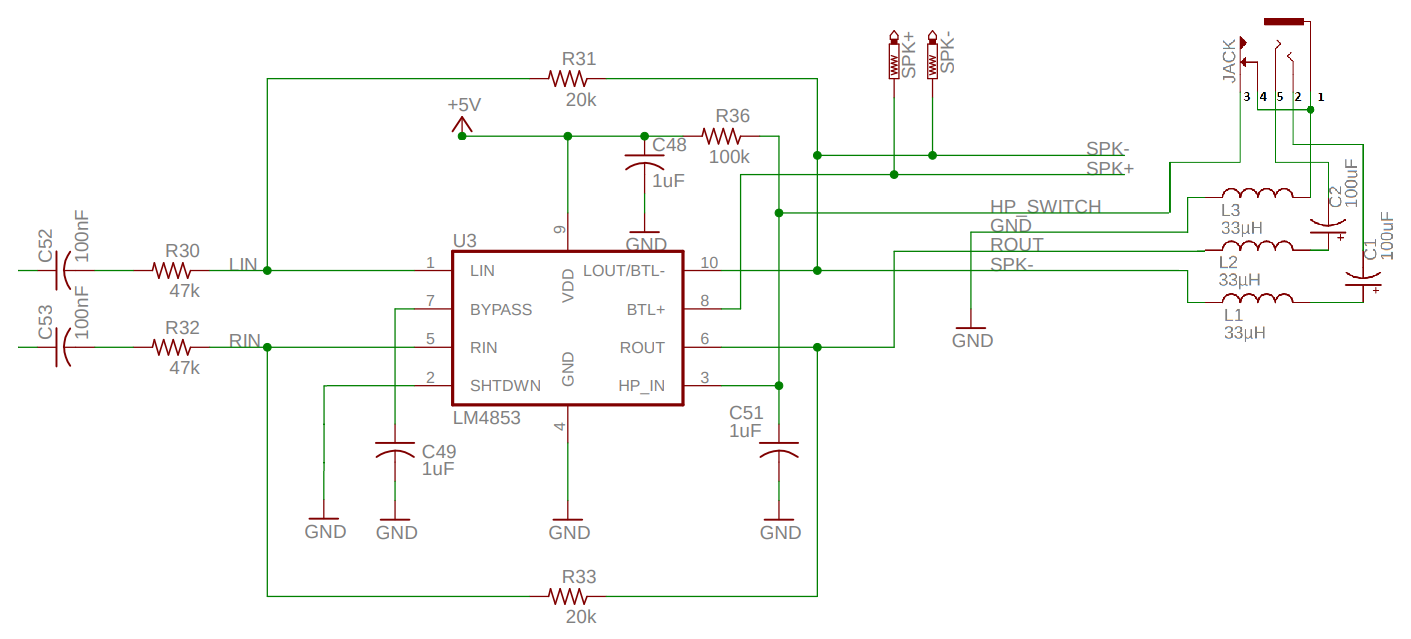Other Parts Discussed in Thread: TPS62056
I'm using an LM4853 in a portable device, powered from 4x AA batteries. This goes to a buck converter down to 3.3V, 800mA output (TPS62056), and then a boost converter to 5V, 1.5A output (MT3608). The LM4853 is powered by the 5V rail. The schematic I am following is from the LM4853 datasheet, with one difference - the headphone jack has a dedicated switch for headphone detect that doesn't interact with the left or right channels. Otherwise, I have everything connected exactly the same as below (the shutdown pin is permanently tied to GND, though, to allow activation at startup).

When I turn power on, with nearly depleted batteries and no headphones plugged in, the 3.3V/5V regulators struggle to come up. It appears to be too heavily loaded. If I disconnect the 1kΩ resistor on the right output, then everything acts normally - until I go to plug headphones in. There is a brief moment *before the headphone detection occurs* where the ring on the audio jack shorts the right output to GND. For some reason this heavily loads the regulators, and causes a brownout.
I've tried this with two separate LM4853 chips, one on a PCB and the other broken out onto a breadboard. Both do the same thing. The volume can be turned all the way off and it'll still occur. Is this a known issue with the amp?




